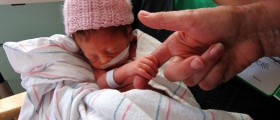About Dyslexia
Dyslexia is a type of learning difficulty, characterized primarily by difficulty or inability to read, write and spell. This spectrum disorder, which is one of the most common learning disorders, can have symptoms that range from mild to severe difficulties.
Dyslexia mainly affects the phonological awareness, verbal memory and verbal processing speed. Phonological awareness is a very important part of early reading and writing development. It basically means understanding how words are made up from smaller units, called phonemes, and how phonemes shape the meaning of a word. For example, in a child with good phonological awareness it is clear how switching the letter “p” in the word “pat” to the letter “s” creates a whole other word- “sat”.
Verbal memory, on the other hand, refers to the ability to memorize a set of verbal information and to store it in short term memory. This is particularly important for the ability to follow simple instructions, such as “get dressed, put your shoes on, wash your face and eat your breakfast”.
- The word dyslexia is derived from two Greek words: "dys" (inadequate or lack of) and "lexicon" (word and/or verbal language). Dyslexia thus means problems learning how to read words and deal with language in print. Historically, dyslexia has been used to describe difficulty in reading as a result of brain damage.
- There are two models used in defining dyslexia: the Orthodox Model and the Davis Model. The Orthodox Model describes dyslexia as developed rather than innate, with difficulty in reading as a result of cerebral disease rather than brain injury. The Davis Model describes dyslexia as difficulty in reading or language processing as a result of intermittent disorientation. This disorientation comes from conflicting messages to the brain, for example, when the eyes are telling the brain one thing but senses of balance and movement are saying something different.
- Another way of understanding dyslexia is the dual-route model. This model explains two pathways from print to speech. One pathway operates via the use of grapheme-phoneme correspondence rules which are termed the non-lexical route for reading aloud. The other pathway operates via access to a semantic system, the lexical route for reading aloud.
- Dyslexia is not a disease but a lifelong condition. The symptoms of this condition are variable from one child to another, but usually, the child has normal or above average intelligence. Some children have problems with speech and poor vocabulary, and some have problems in decoding symbols and sounds that are not registered properly in the brain.
- The overall prevalence of dyslexia, in a study of Thai primary school students, was estimated to be 5–10%. Between 2% and 16% of all school age children were in need of special education services. Specifically, the prevalence was estimated to be as follows: England 14%, Canada 10–16%, United States 10–15%. The ratio of boys to girls was variable from country to country, however, dyslexia had a higher prevalence in boys, approximately 3,4:1,1.
- Dyslexia can be developmental, with no obvious organic damage. Acquired dyslexia is a disorder in reading, usually due to confirmed damage to the nervous system, such as a stroke. It can be peripheral where the visual analysis system is damaged, or central where processes beyond the visual analysis system are damaged, resulting in difficulties in comprehension and/or pronunciation of written words.
- Peripheral dyslexia can be subdivided into three subtypes: neglect dyslexia, attentional dyslexia, and letter-by-letter reading dyslexia. In neglect dyslexia, there is no attempt to read the first few words of each line. When single words are shown to an affected individual, there are errors affecting the first letter or two, for example, nun misread as run, yellow as pillow, and clove as love. In attentional dyslexia, there is a problem when there are several letters in a row or several words on the page: in the dyslexic’s view the letters may migrate from one word to another, and the individual may read glove and/or spade as glade. In letter-by-letter dyslexia reading, the child does not read phonetically, but rather converts letters into their names, such as aitch and vee for h and v, instead of their sounds huh and vuh, respectively.
- Central dyslexia, on the other hand, can be subdivided into non-semantic reading, surface dyslexia, phonological dyslexia and deep dyslexia. In non-semantic reading, the comprehension of written words is very poor. Affected children have impaired semantic systems but are still able to read words aloud using the connections between the visual input lexicon and the speech output lexicon. In surface dyslexia, there is high reliance on the sublexical procedure in reading aloud.
- Children with dyslexia demonstrate similar stages of development to those without this condition. In early childhood, from 2–5 years, children produce clear imagery, a reason why their nightmares can be so terrifying. Their thoughts are bigger, broader, more global, dynamic, less systematic, and less rational than those of older children. As playfulness is a hallmark of this stage, a child with dyslexia may not appear to be affected due to lack of detection of the problem. The second stage is middle childhood, from 5–7 years, where children are starting to acknowledge the significance of things and feel responsibility. Imagination is still more important than knowledge at this stage, and the dyslexic child may consider reading, writing or arithmetic as bad or ugly, and may hate going to school. The last stage is late childhood, (the exact age range was not defined in the literature reviewed), when children become part of various social groups.
- Appropriate counseling is critical for parents and children with dyslexia as it is very important for them to understand the specifics of the condition and how best to manage it. As a general rule, counseling should be conducted with both the parents and child present. A plan of action to improve the child’s learning outcomes should be developed. It is important to provide love and support, and also minimise factors that may worsen dyslexia.
The symptoms of dyslexia may affect one or more of these processes and to a different degree. Every dyslexic person has his or her own pattern of strengths and weaknesses.
Dyslexia in Toddlers and Preschoolers
It may be difficult to recognize dyslexia symptoms in toddlers and to make a positive diagnosis, simply because toddlers are very young and only just starting to develop verbal skills. Some signs that may indicate dyslexia in toddlers include difficulty regarding the pronunciation, learning and repeating simple songs and nursery rhymes, learning names of shapes and colors and problems with fine motor skills. Still, it is very important to realize that every child at such young age has his or her own dynamics in learning and development and that certain difficulties do not necessarily mean the child has dyslexia.
As the child grows and reaches the pre-school age, some symptoms of dyslexia may include delayed speech development, especially compared to other children of that age, inability to pronounce long world and jumbling up phrases- for example “beddy tear” instead of “teddy bear”, incorrect structure of sentences, inability to remember what words to use, no interest in rhyming and difficulty with learning letters of the alphabet.
In most cases, however, dyslexia is first diagnosed once the child starts school or even at a later age. It can even be possible to reach the adolescence without ever being diagnosed with dyslexia, which usually happens in cases with mild symptoms.


















Your thoughts on this
Loading...